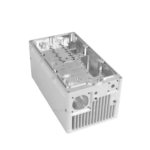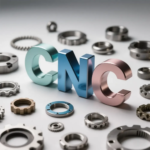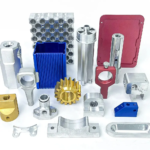When it comes to applying additive manufacturing in production, manufacturers often focus only on the machine itself and ignore the entire machine. 3D Print workflow. However, for the created part, selectGUJAT Software, post-processing solutions or inspection tools play an important role in increasing productivity and effectively integrating additive manufacturing methods.SolidCAMtakes this particularly seriously and has conducted several studies to understand which solutions will work best for their customers. In order to cover all3DPrinting production process, they turn to the inspection equipment industry leader OGPto explore the level of measurement 3D Scanners and the many benefits they offer and consider this equipment to be of great value to machine shops.


Metrology is the science of measurement, often the inspection of manufactured parts to ensure they meet design requirements. with 3D Printing is becoming more and more common and we are starting to see more and more organic parts becoming harder and harder to inspect. Parts inspections like this are usually performed by MMT(Coordinate Measuring Machine), in which a robot is used to measure the shape of a part by repeatedly touching it with a probe. Although this approach has long proven effective, it has some limitations, such as the need to perform checks before beginning data analysis. However, for several years the market has offered more advanced solutions that allow users to save time and be more precise. These measurement levels 3D Scanners are particularly useful when combined with additive manufacturing.


△Measurement quality3D Scanners are ideal for inspecting parts (Image source:Shape capture)
Metrological control
Metrological quality 3D One of the most common uses of scanners in additive manufacturing is part inspection. with 3D Printed parts are becoming more and more complex in design and shape, and it turns out 3D Scanners are more flexible than other detection methods and offer some key advantages. to use MMTyou need to know in advance exactly what you want to measure and how. You should then write your inspection program accordingly and you can start collecting data on these identified characteristics.
SolidCAM applications engineersPierre Genovese Explained: “Use 3D With the scanner you just need to scan the entire part and get all the features of the part. If the user realizes three months later that a new feature of the part proves critical, you can update the entire inspection report with just a few clicks, even if the parts are no longer with you . “
This flexibility also means that operators can carry out pre-programmed inspection procedures before any other action. Instead, operators can begin scanning parts while creating inspection reports and identifying areas of interest, enabling more efficient operation.
With the help of 3D Scanner for reverse engineering
Adopt metrological quality 3D Scanners also facilitate research and development in reverse engineering. This process allows us to understand how a part is manufactured: its properties, functionalities and structure are analyzed to replicate the part and modify it. We can start from an existing part, “deconstruct” it to understand how it works, create a copy or propose a new version. In many industries, such as automotive or aerospace, reverse engineering is becoming increasingly popular, particularly to produce replacement parts that are no longer produced today or whose original designs are no longer available.
Benefit from 3D Scanner, users can very easily scan the part they are interested in to get 3D Model. From there they can go straight to the template 3D Print it or import it GUJAT program for further improvements and modifications.3D The combination of scanning and additive manufacturing can significantly increase the productivity of these tasks.


△3D Printing cutter 3D Scanned data (Image source:SolidCAM)
Analysis and optimization
One of the benefits of additive manufacturing is the ability to iterate quickly to produce products that meet all of our needs and standards.“Perfect” pieces. We can easily adjust variables, adjust parameters and modify designs to take full advantage of 3D Print. That said, if these operations are common in the market, how can we analyze these iterations? This iterative phase can generate dozens or even hundreds of different parts: How can users quickly evaluate their performance? 3D Scanners can effectively facilitate this analysis process. Metrological quality 3D Scanners can be used to create semi-automated inspection programs to quickly and efficiently acquire data from dozens of part iterations. The user can collect data on their samples to make appropriate adjustments to the manufacturing process.
SolidCAM Additive Account ManagerKenny Betz explains: “Cataloging prototypes and iterations of parts during the design process can be a costly and time-consuming process. 3D The scanner allows us to capture data quickly and accurately and provide reliable part history for future analysis and improvement. “
3D The scanner also makes it possible to better optimize the printing step. The scanned data can be integrated into optimization software to optimize parts. Among the different solutions on the market,Metal deskof Live sintering is a typical example: it is a multi-physics simulation software capable of simulating metal binder projection solutions. Shop system The sintering process on printed parts. It allows the mesh to be optimized to avoid printing errors and to take into account all the factors that could modify the part during the sintering process.


△LiveSinter The software displays the adjustments it makes to the milling model based on the scanned data (Image source:SolidCAM)
SolidCAM “Although the simulations make fairly specific assumptions about the printing and sintering processes as well as environmental factors, the most reliable way to tune the software is to import the scan data of the parts you print into the system and allow the software to adjust them accordingly,” the team said. Forecasts Quantitative level. ” 3D Scanner integration can help optimize the whole 3D The printing process; from modeling and printing to optimization and inspection. Integrating such systems into your manufacturing ecosystem can significantly increase your company’s success in integrating additive manufacturing.
More details:
Daguang focuses on providing solutions such as precision CNC machining services (3-axis, 4-axis, 5-axis machining), CNC milling, 3D printing and rapid prototyping services.










